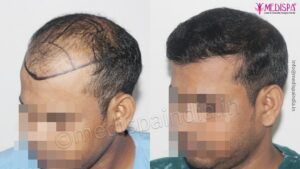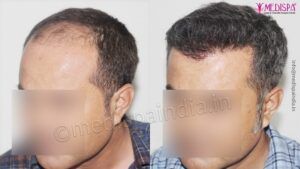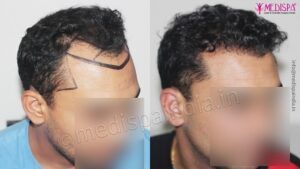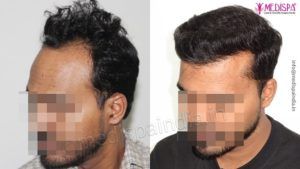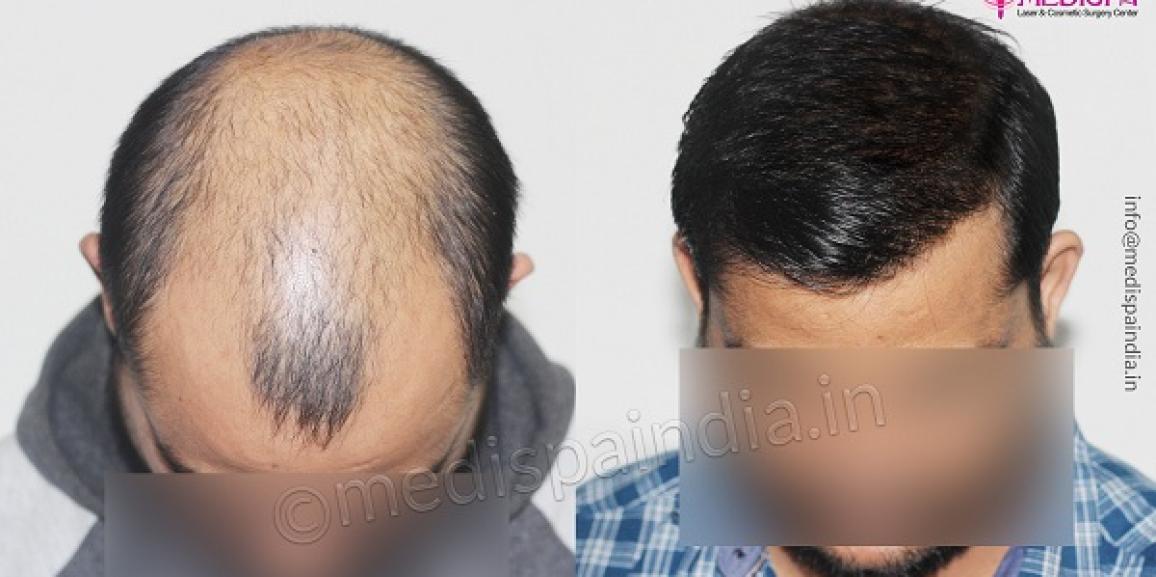
Hair loss may be difficult for the person experiencing it, and everyone wants to manage it in an attractive manner to prevent humiliation. Hair loss or baldness can have a significant psychological impact. Almost everyone looks for natural hair loss solutions, however for permanent hair loss, nothing appears to work. The majority of patients resort to adopting commercially available temporary aids such as wigs and synthetic hairs. Medications are another alternative that doctors frequently recommend in situations of early hair loss but not in cases of complete baldness.
Hair transplantation is regarded as the most effective treatment for hair loss. So, let’s see how we may compare synthetic hairs versus hair transplants, and which method takes home the award for being the best hair loss remedy.
What are prosthetic hairs and its effectiveness?
Prosthetic hairs are non-surgical hair replacement methods that may be referred to as a personalised or tailored wig for bald people.
Hair wigs, which are available in the market to cover the bald region, are not the same as prosthetic hairs. They resemble a patch and are constructed of specific material that is created according to the patient’s balding region or the area where hair density is low. The synthetic hairs are put into a tiny fabric layer that closely resembles scalp skin and is almost unnoticeable. This might be a temporary or semi-permanent treatment for concealing baldness or hair loss.
These wigs are linked to a device that allows your natural skin to breathe and appear extremely similar to actual hair. These hairs are of excellent quality, resembling real hair or including actual human hair. The specialists who execute these treatments extensively examine your scalp before preparing the prosthesis depending on your current hairs and skin colour, as well as their texture.
It is not necessary to remove the prosthesis at night, in the shower, or in swimming pools. Because they must be renewed every 6 to 12 months, they are not a long-term solution. The quality of the material dictates how long it will endure and how it will be cared for.
The following are the steps for preparing prosthetic hairs:
- After obtaining an impression of the region, the base is constructed using the moulding method.
- The foundation is made with a hypoallergenic, nontoxic inert substance.
- The hairs are meticulously positioned, with the aesthetics and hairline design of the bald region in mind.
Hair transplant
Hair transplantation is the only surgery that provides permanent hair loss results. It entails removing hair follicles from the donor region, as well as an adequate number of tissues surrounding the hair follicles, to form a “follicular unit,” which is then transplanted to the recipient bald area. The donor location is chosen because the DHT-resistant area has a lot of hair density. The back and sides of the head, as well as the occipital region, are ideal places, although body hairs in other regions can also be used.
The hair transplant treatment is essentially a precise surgical operation that should be conducted by an expert surgeon who has the necessary qualifications and expertise.
Hair transplant treatments in Delhi are well-known all over the world. People come from all over the world to get their hair transplanted in Delhi.
Hair transplant in Delhi are well-known for their high-quality care. Only a few clinics offer the greatest services. In Delhi, you may receive modern and authentic hair loss therapy. The hair transplant cost in Delhi is very reasonable. The price of a hair transplant is decreasing. This is owing to the clinics’ fierce competitiveness.
Are you looking for the most effective solution to your hair loss problem?
Medispa hair transplant clinic is the finest place to go for comprehensive hair loss treatment.
Differences between prosthetic hairs and hair transplantation
- Invasiveness: Prosthetic hairs are a non-invasive surgical technique, whereas hair transplant methods are minimally invasive and painless.
- Permanency: While prosthetic hairs might be temporary or semi-permanent, hair transplant outcomes are permanent.
- Natural appearance: Even if the prosthetic hairs are of the highest quality, viewers may detect them, whereas hair transplants performed by skilled hands appear absolutely natural.
- Replacements: Unlike hair transplants, which are permanent for life, prosthetic hairs require continual replacement every 6 months to a year.


